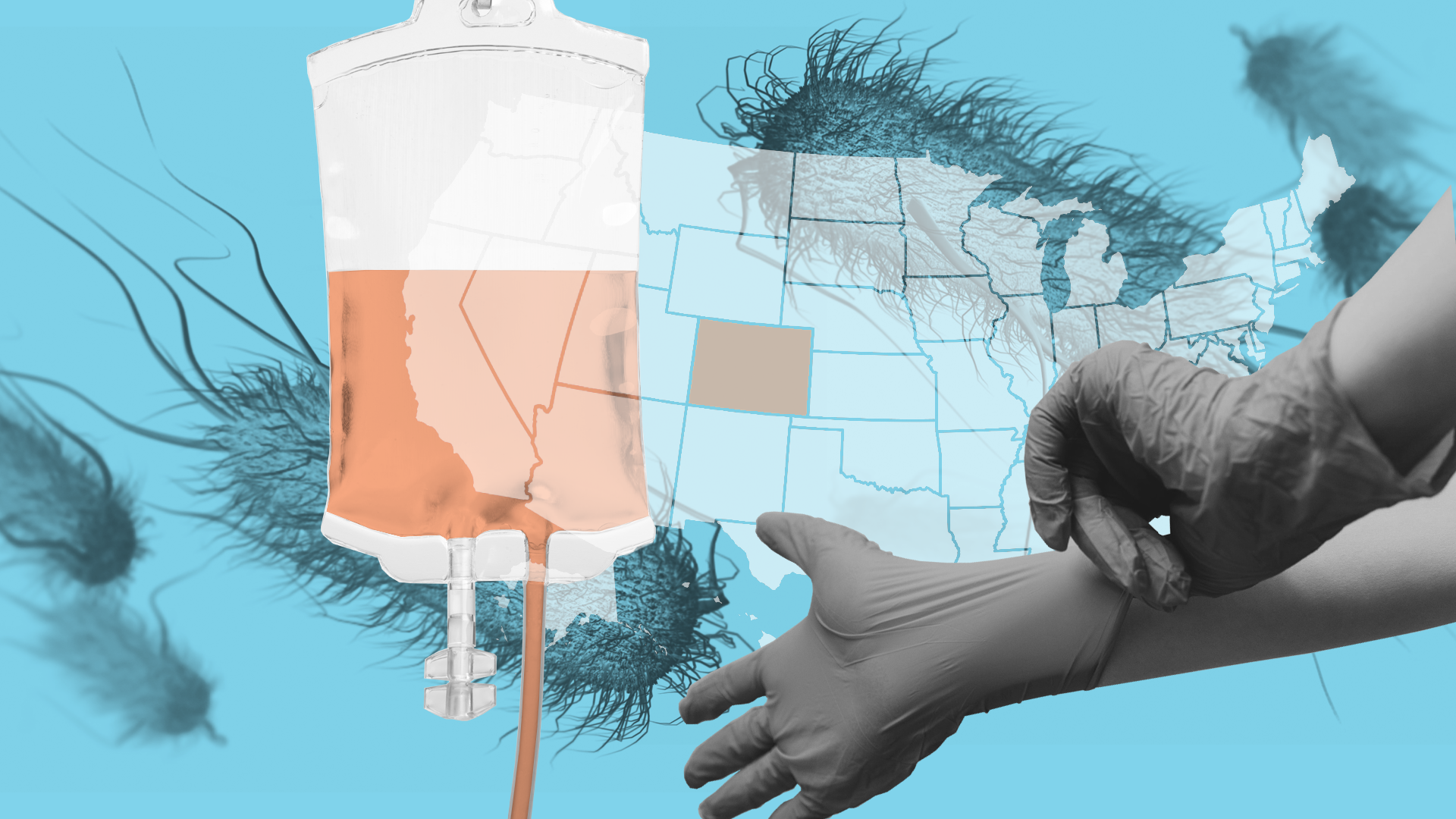How Antibiotics Reporting Informs Improvement Efforts in Colorado
State health official discusses how the state puts prescribing data to work

Data collection is crucial to helping health care stakeholders—including medical providers and public health experts—to evaluate antibiotic prescribing practices, ensure their appropriate use, and slow the emergence of deadly antibiotic-resistant pathogens, or “superbugs.”
The Centers for Disease Control and Prevention’s National Healthcare Safety Network (NHSN) gathers data on a range of health care-associated infections that patients acquire during hospitalization, long-term care facility stays, outpatient surgery center visits, or medical procedures such as dialysis.
This surveillance system also collects data specific to antibiotic-resistant infections and antibiotic prescribing from inpatient facilities through the Antimicrobial Use and Resistance (AUR) Module—allowing these facilities to better understand their prescribing practices and improve antibiotic stewardship efforts—with the goal of reducing antibiotic-resistant infections.
This interview with Chris Czaja, manager of the Healthcare-Associated Infections and Antimicrobial Resistance Program at the Colorado Department of Public Health and Environment, is one in a Pew series of interviews with five state health department officials to learn about antibiotic stewardship efforts to encourage data reporting. This interview has been edited for clarity and length.
Q: Can you tell us about your role with the Colorado Department of Public Health and Environment?
A: I manage the Healthcare-Associated Infections and Antimicrobial Resistance Program, which exists to prevent the spread of health care-associated infections and antimicrobial-resistant organisms across the different health care settings in Colorado. We do that in a number of different ways, including disease surveillance, responding to and containing infections, and infection prevention. Antibiotic stewardship, or improving prescribing practices, is a big part of that.
Q: Did COVID-19 change your work at all?
A: Yes. Most of our staff members were deployed to the COVID-19 response early in 2020, and some of our staff have remained there. In some respects, we’ve had fewer staff resources to address antimicrobial stewardship during the pandemic.
But earlier this year we hired an epidemiologist to help us work with data on antibiotic use and antimicrobial resistance for antibiotic stewardship work. In addition, we started working with a Leadership in Epidemiology, Antimicrobial Stewardship, and Public Health (LEAP) fellow, a position funded by CDC, and he has also helped support our antimicrobial stewardship work.
Q: How has the LEAP fellow helped improve antibiotic stewardship efforts in the state?
A: Our LEAP fellow, Dr. Danny Dodson from the Children’s Hospital of Colorado, helped us study what stewardship looks like in our hospitals. We knew through CDC data that a lot of Colorado hospitals were increasing their adherence to the core elements of antibiotic stewardship, but some of the details of the programs in place at hospitals were less clear to us, particularly as we got outside the academic setting into acute care and critical-access hospitals in the community.
So in the fall of 2020, Dr. Dodson sent out a detailed survey to Colorado hospitals; we got responses from about 40 out of about 100 hospitals in the state. The survey was designed to assess what hospital stewardship practices looked like, including antibiotic use monitoring and reporting. We know that right now nearly 50% of hospitals in the state are using the National Healthcare Safety Network’s AUR Module.
Q: What kinds of issues with reporting data to NHSN did hospitals tell you about?
A: Logistics and IT struggles are major barriers. For a lot of hospitals, it’s not so much that they’re hesitant to report their data, but it’s actually the nuts and bolts of how to report.
A lot of third-party software doesn’t communicate directly with the AUR Module. That creates an additional cost and requires resources that hospitals don’t have, so a lot of pharmacists are just using Excel files to keep track of antibiotic use. Obviously, that’s a really time-consuming endeavor for people who have multiple jobs.
AUR reporting is dramatically lower in critical access hospitals in Colorado: Only about 14% are reporting, based on the hospitals we’ve surveyed so far. And sometimes folks at some of the smaller hospitals are working with little experience in how to track and use data. So even if they have data on antibiotic use, knowing what to do with it takes some work.
Q: It sounds like hospitals are juggling a lot. Going back to COVID-19: Did the pandemic make it harder for them to prioritize stewardship?
A: Yes. Our survey found that because of the pandemic, about a third of hospitals, and especially the pharmacists who are really at the crux of antibiotic stewardship, had less time to commit to antibiotic stewardship. Instead, they were doing things like figuring out how to use remdesivir and so many other things related to COVID-19.
A lot of hospitals, especially the smaller hospitals, were already stretched very thin. At academic centers like Children’s Hospital Colorado, you might have someone who’s dedicated to directing stewardship and is only tangentially related to infection control issues. But at a lot of the smaller hospitals, the same staff are leading all of these programs. So when COVID-19 hit, the pandemic took priority.
Q: Can you tell us more about how you use NHSN data in your work?
A: My program has been able to do reports assessing how many hospitals in Colorado have adopted core elements of stewardship, because those data are reported to NHSN. The reports help us pinpoint areas where there’s room to improve prescribing in the state.
In the future, we’d like to use NHSN data to produce a Colorado antibiogram, which is a summary of how susceptible different pathogens are to specific antimicrobials. We have done so in the past by pooling data from hospital antibiograms. These data are helpful for identifying antibiotic resistance trends to prescribers.
Q: Is there room to improve antibiotic stewardship in Colorado?
A: I think we might have some room to catch up in nursing homes. Every health care setting has had a lot of competing responsibilities, particularly in the past year, but in nursing homes there’s usually only one person responsible for infection prevention and antimicrobial stewardship—usually in addition to doing five other jobs! It’s really hard for nursing homes to make progress in improving antimicrobial use and reporting with such limited resources.
Q: What advice would you give to health departments in other states looking to improve antibiotic use and reporting?
A: We need to make it easier for facilities to report antibiotic use data, like making it easier to convert electronic prescribing data to a format compatible with the AUR Module.
Also, there are limited resources in any health care setting, but a lot of people in Colorado really know a lot about antimicrobial stewardship. We need to link these folks to people with less experience with stewardship, so they can provide guidance.













